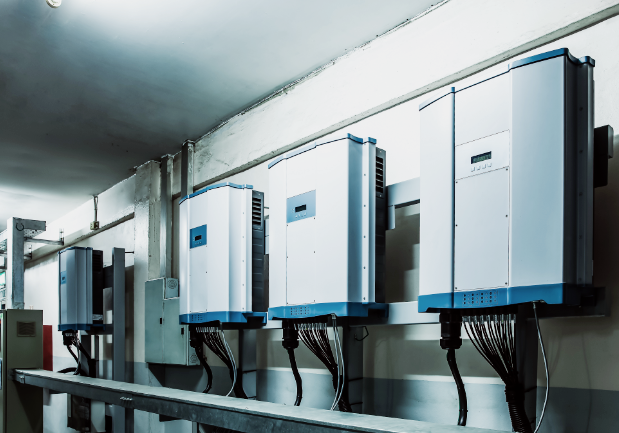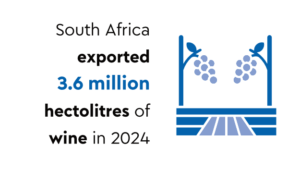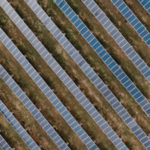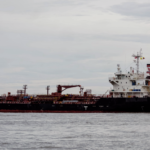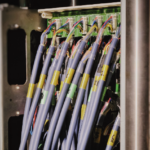At the end of 2023, the South African government announced the preferred bidders in the first bid window of its Battery Energy Storage Independent Power Producers Procurement (BESIPPP) programme. The utility-scale battery energy storage systems, or BESS, support renewable energy generation plants to store the energy generated by solar or wind and dispatch it to the grid when required.
The BESIPPP is South Africa’s first grid-scale private-sector energy storage programme. Minister of Mineral Resources and Energy Gwede Mantashe describes the programme, launched in March 2023, as ‘a critical measure to assist in increasing the available grid capacity in the Northern Cape supply area through the utilisation of energy storage’.
The current BESIPPP projects will help procure up to 513 MW ‘from facilities that will provide capacity, energy and ancillary services to Eskom at five specified sites’.

Three of the projects are in the Northern Cape – Oasis Aggeneis in Aggeneis; Mogobe BESS at Ferrum; and Oasis Nieuwehoop at Nieuwehoop. The fourth is Oasis Mookodi at Mookodi in the North West province, while the fifth preferred bidder – for Garona substation in the Northern Cape – is set to be announced at a later stage.
EDF Development is the preferred bidder in the three Oasis projects, which will all employ lithium-ion battery (LIB) technology, while Norway’s Scatec is the preferred bidder in the Mogobe BESS project, which will use lithium-ion phosphate battery technology.
When it comes to BESS, Eskom appears to be on a roll. A few weeks before the BESIPPP announcement, the utility unveiled a BESS installation that it dubbed the first of its kind in South Africa and the largest of its kind on the continent.
The BESS at the Hex distribution substation in Worcester in the Western Cape is but one part of a much larger project announced in November 2022 to help alleviate pressure on the national grid amid higher levels of load shedding. Under Phase 1, BESS units with a total of 833 MWh storage are being deployed at eight substations in the Western, Eastern and Northern Cape provinces as well as KwaZulu-Natal. This phase also includes 60 MW of solar PV capacity.
The Hex site is designed to store 100 MWh of energy, which is enough to power a town such as Mossel Bay or Howick for about five hours, according to Eskom. ‘We are pioneering the implementation of the BESS technology, serving as a large-scale commercial project to validate the technology’s feasibility and benefits,’ Velaphi Ntuli, Eskom’s GM of distribution and operations enablement, said at the time. ‘The successful implementation will pave the way for wider adoption and possible export of the technology to other regions beyond the borders of South Africa.
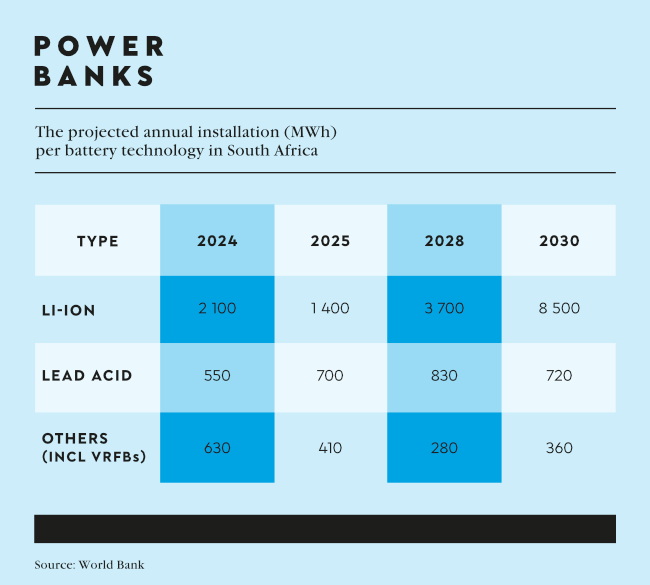
A later phase of the project will include an additional 144 MW of storage capacity – equivalent to 616 MWh – at four Eskom distribution sites and one transmission site, with a 58 MW solar component.
A host of other BESS projects have been given the go-ahead in South Africa under government’s Risk Mitigation IPP Procurement programme, which was announced in 2020 to alleviate supply constraints by procuring 2 000 MW from a range of technologies, including battery storage.
For example, construction is under way on the Umoyilanga project – touted as the country’s first wind-solar-storage integrated virtual power plant, with production scheduled to start in March 2025. A joint venture between EDF Renewables and Perpetua Holdings, and funded by Nedbank, Rand Merchant Bank and the Development Bank of South Africa, the project will combine generation from two sites that are 900 km apart. Avondale in the Northern Cape will feature 115 MW of solar PV and 30 MW of BESS, while Dassiesridge in the Eastern Cape will have 63 MW of wind supported by 45 MW of BESS. The project has secured a 20-year power purchase agreement with Eskom to supply 75 MW dispatchable renewable energy daily, with supply from the two sites co-ordinated by a smart energy management system.
Wind power will charge the BESS at Dassiesridge at night, discharging energy to the grid in the morning until the sun rises, while the Avondale solar plant will supply the bulk energy during daylight hours, supplemented by Dassiesridge. Excess solar will charge the BESS at Avondale, which will discharge after sunset until 9 pm.
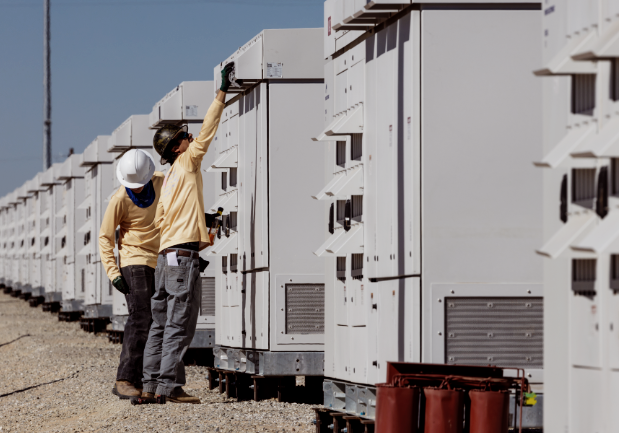
Also under the RMIPPPP, the ZAR16 billion Kenhardt hybrid project in the Northern Cape – 150 MW solar PV, with 1.1 GW of BESS – is being built by Scatec. It is being billed as the largest PV and battery plant in the EMEA region.
In a third recently announced BESS project under the RMIPPPP, Old Mutual Alternative Investments is committing ZAR158 million in funding through its hybrid equity division to Hydra HoldCo, to acquire a 35% stake in TotalEnergies’ Hydra Storage project in the Northern Cape. The Hydra project combines a 216 MWp solar PV facility with 497 MWh in BESS.
‘As the country continues to navigate the challenges of load shedding and climate change, such strategic investments are crucial in shaping a sustainable and resilient energy future,’ according to Hydra HoldCo director Christopher Aberdein. The project, which was scheduled to start in late-2023, comprises three sites in the Northern Cape and is contracted to supply the national grid with a total of 75 MW daily.
In addition, government’s flagship Renewable Energy IPP Procurement programme, the precursor to the RMIPPPP and BESIPPP, is expected to provide for BESS capacity under its Bid Window 7.
Clearly batteries are big business when it comes to grid-tied renewable energy, but what about domestic and commercial behind-the-meter (BTM) generators/users of renewable energy?
With the complete removal of the licensing cap for private renewable energy generation projects towards the end of 2022, there has been a rush on solar PV installations. As an illustration, solar panel imports into South Africa totalled ZAR5.6 billion for the entire 2022. Halfway through 2023, imports were already more than double that, at ZAR12 billion. ‘Eskom data indicated that 4.4 GW of rooftop solar had been installed by June 2023 – four times what it was in March 2022,’ as reported by the Daily Maverick.
Battery storage is an essential part of the kit for BTM solar power generators/users, because the sun doesn’t shine 24 hours a day. A 2023 World Bank report assessing the entire battery energy storage market and value chain in South Africa estimates that by 2030, annual installation demand for total battery energy storage will be 10 GWh to 15 GWh, up from 270 MWh in 2020. It says most of the growth will be accounted for by BTM users, electric vehicles and front-of-meter grid-linked storage.
While lead acid batteries are still the most prevalent, the study estimates a CAGR of 88% for LIB from 2020 to 2030; by comparison the lead acid battery market will grow by just 11%.
The private sector is also investigating alternative technologies, such as vanadium redox flow batteries (VRFBs), which offer longer-duration storage. Bushveld Energy, a subsidiary of South African vanadium miner Bushveld Minerals, is employing a 1 MW/4 MWh VRFB at the Vametco hybrid mini-grid near the North West province town of Brits, which will serve as a proof-of-concept.

‘This not only proves the attractiveness of the business case for long-duration energy storage using vanadium, but also demonstrates investor interest in the market in the roll-out of VRFB technology,’ Fortune Mojapelo, CEO of Bushveld Minerals, told Engineering News. ‘In the future, we expect to see increased demand for projects combining solar PV and VRFB technology, especially in regions with similar challenges to South Africa.’
Lance Dickerson, MD of local battery provider REVOV, confirms the growth in back-up battery storage. ‘The power crisis has obviously had a massive impact on the demand for back-up battery power. The batteries are either used in uninterrupted power systems or as the back-up component to solar installations. There is no doubt a growing understanding in the market that the planet matters and so people are looking at cleaner alternatives, meaning that generators just aren’t as appealing as they used to be.’
Dickerson points out that there has been an increase in demand not only for battery energy storage, but also for cleaner battery solutions, such as his company’s 2nd LiFe batteries. Second-life batteries refer to used first-life LIB that have sufficient residual capacity to serve as stationary back-up storage.
‘Even within lithium batteries themselves, carbon footprint is an important differentiator. Our 2nd LiFe batteries have a carbon footprint of about 15% of that of a first-life battery, and we are finding that this is a compelling consideration for people who care about long-term sustainability.’

